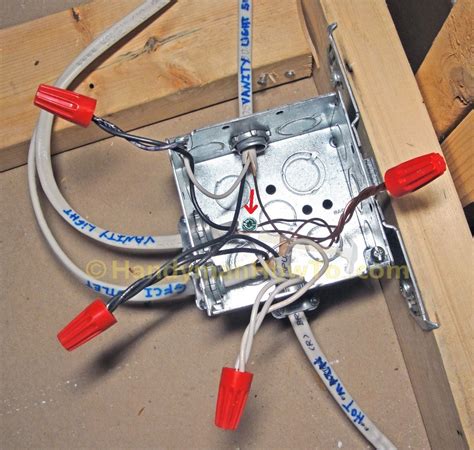box that holds electrical wire Plastic boxes are the most common choice for residential wiring projects. They are lightweight, easy to install, and less expensive than metal options. Plastic boxes are also non-conductive, reducing the risk of electrical shock, and they’re compatible with . Clear Choice Welding & Fabrication is your go-to source for high-quality welding and custom fabrication services. Our team of experts uses advanced welding techniques and top-quality materials to create custom pieces that meet your specific needs.
0 · wire connections in electrical box
1 · standard electrical box size chart
2 · residential electrical boxes
3 · junction box for electrical wiring
4 · home depot electrical outlet box
5 · exposed electrical outlet box
6 · electrical outlet box types
7 · electrical box with outlet
Swanton Welding-Heavy Fab is a leading provider of custom metal fabrication and structural steel services in Wauseon, OH. With state-of-the-art facilities and a team of expert craftsmen, they offer unmatched quality and experience for all types of fabrication projects.
Wiring connections—where wires join an outlet, switch or other wires—must be inside an electrical box. Here’s why: Connections are the weak link in an electrical system. If they get damaged, loosened or pulled apart, you’re left without power, or worse, with a fire.
Wiring connections—where wires join an outlet, switch or other wires—must be inside an electrical box. Here’s why: Connections are the weak link in an electrical system. If they get damaged, loosened or pulled apart, you’re left without power, or worse, with a fire. Electrical boxes encase wire connections to protect them from short circuits. They are vital for fire safety and are used for receptacles, ceiling fans, outside outlets, and more. Unless the device is one of the few that contains its own wires, it likely will need an electrical box. Plastic boxes are the most common choice for residential wiring projects. They are lightweight, easy to install, and less expensive than metal options. Plastic boxes are also non-conductive, reducing the risk of electrical shock, and they’re compatible with .Crafted from durable pre-galvanized steel, these boxes are designed to house wiring devices such as switches or outlets. With RACO's Switch Electrical Boxes, convenience is key. The .
The Spruce explains that a junction box — also called an electric box — is where two or more electrical wire connections meet into one behind a plastic or metal protective container. This junction box is a necessity in a home to protect against shortages in wires that can sometimes cause fires, amongst many other things.Created for residential and light commercial building use, housing wiring devices, or distributing power to multiple electrical devices, these innovative smart boxes allow for more cubic inch in the box.

wire connections in electrical box
A single-gang box 3 1⁄2 in. deep has a capacity of roughly 22 1⁄2 cu. in., enough space for a single device (receptacle or switch), three 12–2 w/grd cables, and two wire connectors. Double-gang boxes hold two devices; triple-gang boxes hold three devices.Electrical boxes are durable enclosures that house the wire connections responsible for powering many of the devices and appliances in your home. These boxes are designed for a variety of . A junction box is a standard electrical box that contains two or more spliced electrical cables. The box must have a removable, accessible cover. Junction boxes can be placed along electrical conduit, too.
A junction box provides a safe, code-compliant space for housing cable connections for outlets, switches, or splices. They prevent potential electrical shocks, and keep sparks from spreading to flammable surroundings. Wiring connections—where wires join an outlet, switch or other wires—must be inside an electrical box. Here’s why: Connections are the weak link in an electrical system. If they get damaged, loosened or pulled apart, you’re left without power, or worse, with a fire. Electrical boxes encase wire connections to protect them from short circuits. They are vital for fire safety and are used for receptacles, ceiling fans, outside outlets, and more. Unless the device is one of the few that contains its own wires, it likely will need an electrical box. Plastic boxes are the most common choice for residential wiring projects. They are lightweight, easy to install, and less expensive than metal options. Plastic boxes are also non-conductive, reducing the risk of electrical shock, and they’re compatible with .
Crafted from durable pre-galvanized steel, these boxes are designed to house wiring devices such as switches or outlets. With RACO's Switch Electrical Boxes, convenience is key. The .
The Spruce explains that a junction box — also called an electric box — is where two or more electrical wire connections meet into one behind a plastic or metal protective container. This junction box is a necessity in a home to protect against shortages in wires that can sometimes cause fires, amongst many other things.Created for residential and light commercial building use, housing wiring devices, or distributing power to multiple electrical devices, these innovative smart boxes allow for more cubic inch in the box.A single-gang box 3 1⁄2 in. deep has a capacity of roughly 22 1⁄2 cu. in., enough space for a single device (receptacle or switch), three 12–2 w/grd cables, and two wire connectors. Double-gang boxes hold two devices; triple-gang boxes hold three devices.Electrical boxes are durable enclosures that house the wire connections responsible for powering many of the devices and appliances in your home. These boxes are designed for a variety of .
A junction box is a standard electrical box that contains two or more spliced electrical cables. The box must have a removable, accessible cover. Junction boxes can be placed along electrical conduit, too.

standard electrical box size chart
Stick welding sheet metal can be done by welding DC electrode negative with 20-40A which is about the the lowest amperage settings that still allows to strike an arc. Suitable electrodes are E6011 for rusty or painted surfaces or E6013 for clean surfaces.
box that holds electrical wire|electrical outlet box types